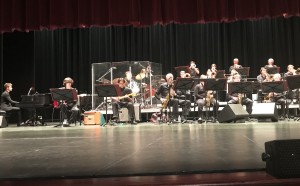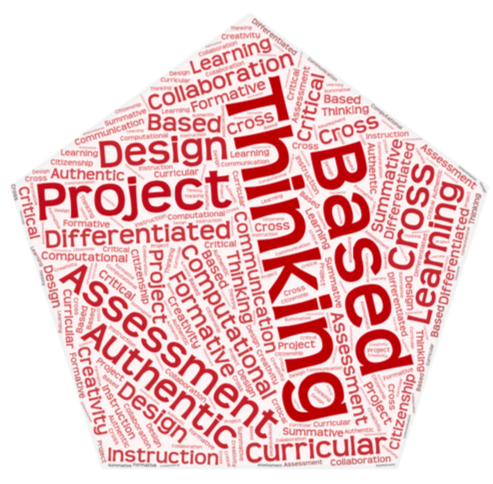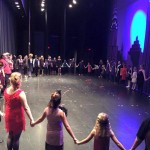UGH! Here it comes again!
My formal observation, along with the pre-and post-conference where I am supposed to discuss, in a nutshell, what is happening in my classroom.
I hear all of the “buzz” terms being tossed around about lesson design, and I know I will be asked how I am implementing that in my classroom. (see featured image)
It occurs to me that the buzz words in education are what arts educators have been doing for centuries. (by “arts” I am referring to the band, choir, orchestra, theater, visual art etc.) Preparing for a performance IS Project-Based Learning (PBL).
What most people see as music education:

This is what happens before this public sharing:
Step 1 in PBL: Identify a Unique Challenge or Problem
Step 1 in planning a performance: What skills do my students need to learn in this process?
- I determine what my students’ prior knowledge base is and what they need to learn next.
- Secondary: a key signature, a more advanced rhythm, a new time signature, a combination of those skills, or changing between different known keys/rhythms/times.
- Elementary: Singing in a different meter, learning a new set of instruments, exploring traditions or cultures through experiencing their music.
Step 2 of PBL: Investigate the challenge using the inquiry process & apply ideas in the discipline.
Step 2 in planning a performance: Choose music to sight-read/try out.
- Secondary:
- I sift through music in my current library and choose 3-5 songs that require mastery of the selected skill.
- I compose or find short “exercises” that introduce the skill and practice that skill in isolation.
- I introduce the pieces of music chosen from my library, and through the sight-reading process, have students identify the new skills from the exercises in the music.
- Elementary:
- I choose a set of songs that fit with the performance theme and address the goals
- students learn about the music and its cultural/historical relevance
Step 3 of PBL: Explore the ideas and challenge them through collaborative activities.
Step 3 of planning a performance: rehearse in small groups.
- Secondary:
- I divide the ensemble into sections to practice in isolation from the whole ensemble.
- Students work collaboratively to solve obstacles specific to their part/instrument.
- I coach the small groups as needed.
- Elementary:
- Practice as individual classes and small groups within the class
- Give constructive feedback: 3 stars and a wish (star=something we did really well; wish=something we could do better)
Step 4 of PBL: Utilize the inquiry process to refine products.
Step 4 of planning a performance: Reflect on progress and determine ways to refine performance.
- Secondary:
- At this point, I usually record a rehearsal (video and audio)
- I have students listen without visual, watch without sound, and then watch and listen together.
- Students reflect in three areas: personal performance, section performance, full ensemble performance.
- This information is used to decide what we are going to focus on to perfect before the performance.
- Elementary:
- Using constructive feedback from step 3, students brainstorm ways to make the “wish” happen.
Step 5 of PBL: Develop the summative product that addresses the challenge or problem & publicly shares it.
Step 5 of planning a performance: PERFORM
- Secondary:
- I record the performance.
- Students evaluate the performance and give themselves a “grade.”
- Students also set personal, section, and ensemble goals for the next performance, and the cycle continues.
- Elementary:
- Students reflect in groups about the performance and give feedback to each other.
This is the tried and true cycle that has been working in music education for as long as anyone can remember. It is taught in teacher preparatory programs all over the world (or some variation thereof).
Music educators sometimes forget that the in-depth processes addressed in their programs aren’t apparent to everyone who sees the performances. Yes, what we do is about showcasing our students. In addition to that, we need to make sure that we are informing administrators, parents, school board members, and our communities about the deep thinking that is happening to bring these performances to life. This type of problem solving and collaboration is what our students need when they enter the job force and transition into adult living. We are tasked with teaching students HOW to learn.
If you don’t know the intricacies of what is happening in the arts department at your school, make an effort to find out. If you don’t have an arts department, find out why and what you can do to bring that back. I look forward to hearing how you are advocating for arts education in your setting.
Yavapai Community College jazz ensemble
Wordart.com
https://www.scsdk8.org/apps/pages/index.jsp?uREC_ID=1101467&type=d&pREC_ID=1394190
https://www.freshgrade.com/blog/the-5-steps-of-project-based-learning/










Comments 3
The thing that struck me in your post is the difference between your two groups of students. I often think of how different my sophomores and juniors are, and they only have a year between them. It must take a complete mindset switch to prepare yourself for that change every day.
It was awesome to read your article as I have never really thought about all of the pieces and parts that go into bringing a concert together. It makes total sense now why art education brings to life so many things for students. This was truly eye opening.
Hi Susan, I never thought of arts education as project based learning, but the way you describe it, it makes so much sense. This is a great education to the readers of this blog. For those of us who haven’t seen behind the scenes of a music performance, it’s very eye-opening. Thanks for this great perspective!